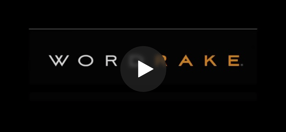Using Parallel Construction
When we refer to someone as a “born writer,” we mean this person has an ear tuned to the sound words make on paper, an innate ability to turn syntax into a melody for the eyes. If that innate ability were an orchestra, the string section would be parallel construction.
Parallel construction can be subtle and soothing, poetry hiding in prose, as we hear in a 1940 essay by E. B. White:
It wasn’t just the sleighs that were buried; it was the sense of the past, something of merriment gone, a sound of bells over snow.
or memorable, like this maxim from Lao Tzu:
If you are depressed, you are living in the past.
If you are anxious, you are living in the future.
If you are at peace, you are living in the present.
When we want to play two clauses against each other, we should write in parallel:
Extra-large schoolboys are called Tarzan in admiration, and undersized ones are called Tarzan in derision.
When we string words in a series, it enhances the rhythm if we make the elements parallel. In the example below, we can accomplish this with or without as the second and third times:
He put in stretches as an accountant, as a clerk, and as a peddler.
If we do not blend our syntax with parallel construction, our reader’s eyes hear not the string section of the orchestra, but a fifth grader on the trumpet with his buddy on the kazoo:
Drinking too much wine can be as harmful as not to drink enough.
In Germany, patents are granted for any invention that is new, susceptible of industrial application, and involves an inventive step.
Because the agents had no express authority, it is also unlikely that any implied theory of liability exists.
We establish the rhythm of a parallel pattern by repeating the same word or the same part of speech, or both:
Combining their resources of no capital, no experience, and no contacts, Burroughs and a partner founded an advertising agency.
The steamboat has been laid off, the wharf is in ruins, the factories are gone, and the population has dwindled.
The more charts and graphs flourish, the faster business decays.
Note the difference in the kazoo examples above when we make them parallel:
Drinking too much wine can be as harmful as not drinking enough.
In Germany, patents are granted for any invention that is new, that is susceptible of industrial application, and that involves an inventive step.
Because the agents had no express authority, they likely had no implied authority.
Here is one of the best examples of parallel construction I have seen in a while. It's from an AP article about the late (truly great) Peter Matthiessen. Note how the writer makes the three pieces parallel by beginning each with an adjective, following that with the same word—when—and ending each with a past participle:
Much of his fiction, from At Play in the Fields of the Lord to Bone by Bone, bestowed a lion-like aura upon nature—grand when respected, dangerous when provoked, tragic when exploited.
That's a melody for the eyes, and I'm sure Matthiessen would be pleased. Whether we write an email to a client, a brief to a judge, or a report to a supervisor, using parallel construction catches our reader’s eye and captures our reader’s imagination. And it contributes greatly to the pleasure we feel when we read.
WordRake can help by removing dull and useless words. That's our mantra: "Every word not conveying meaning gets in the way of every word trying to convey meaning." When we remove the unnecessary words, the words with meaning shine brighter. Click here for a free trial.





